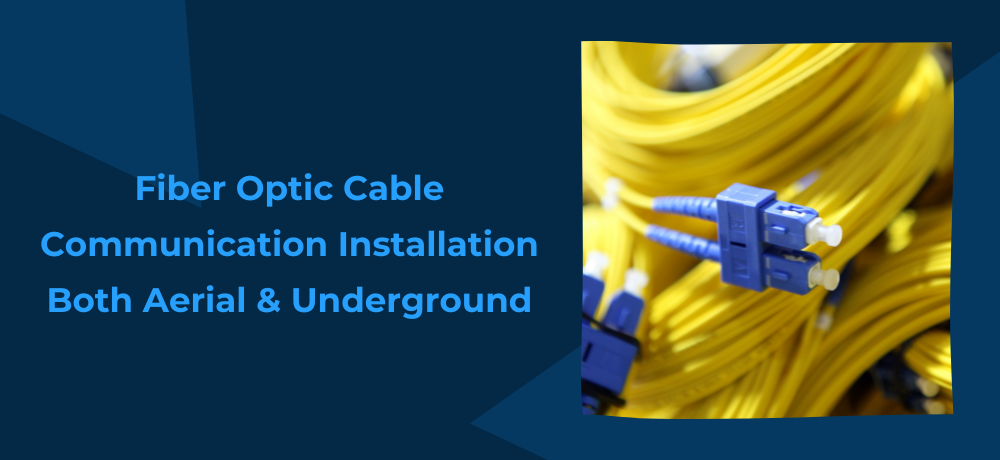Fiber Optic Cable Communication Installation Both Aerial & Underground
- RTR Engineering
Categories: Engineering Fiber Optic Installation Network Solutions Telecommunications

In the fast-paced world of Fiber Optic Telecommunication installations, versatility and adaptability are key. As an experienced engineer, I specialize in both aerial and underground fiber optic cable communication installations, providing comprehensive solutions to meet the evolving needs of modern communication networks. Today, I want to share insights into the significance of both aerial and underground fiber optic cable communication installations, as well as how they cater to specific requirements.
1. Maximizing Coverage and Flexibility
Combining both aerial and underground fiber optic cable communication installations allows engineers to maximize network coverage and flexibility. Aerial installations excel in urban areas, where utility poles are abundant, enabling rapid network expansion without extensive trenching. On the other hand, underground installations serve areas where aesthetics, environmental regulations, or safety concerns prohibit aerial installations, ensuring seamless communication service provision.
2. Tailoring Solutions to Geographic Constraints
Each geographic region comes with its unique challenges and constraints. Aerial installations offer an ideal solution for mountainous or heavily wooded terrains, where underground installation may be impractical or disruptive to the environment. Conversely, in urban landscapes with limited space, underground fiber optic cable communication installations are a go-to choice, maintaining a clean and unobtrusive cityscape.
3. Balancing Cost-effectiveness and Longevity
Engineers must strike a balance between cost-effectiveness and long-term network sustainability. Aerial installations are generally more budget-friendly, making them attractive for initial network deployment. However, underground installations tend to offer superior protection against harsh weather conditions and vandalism, ensuring the longevity of the network and thus minimizing maintenance and repair costs in the long run.
4. Customizing Solutions to User Demands
Aerial and underground fiber optic cable communication installations enable engineers to customize solutions based on user demands. Residential areas may benefit from aerial installations due to their swift deployment, while sensitive industries may require underground installations for enhanced security and protection. Catering to diverse demands fosters a resilient and versatile telecommunication infrastructure.
5. Innovation in Underground Installations: Horizontal Tunneling
In the realm of underground installations, innovative methods are continuously shaping the field. One such method that has gained traction is the utilization of techniques similar to those used in oil drilling. Engineers now have the capability to create horizontal tunnels beneath the ground for laying fiber optic cables. This method is particularly useful in urban areas where limited space poses challenges for traditional trenching methods. By employing this horizontal tunneling approach, telecommunication networks can be expanded efficiently while minimizing disruption to the urban landscape.
Both aerial and underground fiber optic cable communication installations play critical roles in meeting the ever-evolving demands of modern communication networks. At RTR Engineering, I offer a comprehensive range of services, including Safety & Automation, Safety Control & Guarding Concept Development, Consulting, Electrical Engineering, Project Management, Re-engineering, Industrial Safety Training, Safe Operating Procedures, Training Materials, Pre-start Health and Safety Reviews (PSR’s/PHSR’s), Hazardous Area Classification in addition to Telecommunications Engineering. By embracing innovative techniques like horizontal tunneling, we continue to push the boundaries of what's possible in creating seamless and adaptable communication networks.
To learn more about the services I offer, please click here. If you have questions, I’d love to hear from you. Please feel free to call me at (519) 577-7898 or email [email protected].